RELG 433 - Biblical Archaeology
Course Notes
Module 7 -The Pharaohs of the New Kingdom
Images in the text are linked to larger photos - click on them to see the larger pictures.
Hover the mouse over the images to see their captions and copyright credits.
You will sometimes find scholars claiming that Monotheism - belief in one God - originated with the Egyptian Pharaoh Akhenaten, and that the Israelites got the idea from him. None of them seems willing to consider that things might be the other way around - that Akhenaten got the idea from Joseph and/or the Hebrews during their stay in Egypt.
To me, it seems more likely that Akhenaten got the idea from the Hebrews. Akhenaten's view of "Aten" seems limited to a sun-god who gives life, and Monotheism in Egypt died out with Akhenaten's death.
The Hebrew concept of God continued to develop, and has endured and flourished to the present day.
The most likely time for the Hebrews to have been welcome in Egypt, and for a foreigner such as Joseph to rise to a high position, was during the period of the Hyksos - the foreign Canaanite rulers of Lower Egypt.
Then, when the Hyksos were expelled by Pharaoh Ahmose, the Hebrews might also have been treated as conquered tribes rather than as welcome guests.
The Pharaoh most often associated with Moses and the events of the Exodus is Ramses II. Moses' name itself is Egyptian, rather than Hebrew, and has the same root as Ah-mose and Tuth-mosis.
The "New Kingdon" in Egypt
The New Kingdom dates from the time when the Egyptians, led by Ahmose, drove out the Hyksos overlords, and re-established rule by Egyptian Pharaohs.
Art and building flourished, the country became rich again.
However, the priesthood began to increase in power, until by the time of the death of Tutankhamun it seems that the priests were so powerful that they could force the new young Pharaoh to change his name from Tutankhaten to Tutankhamun. His name shows that he had originally been dedicated to "Aten", the name of the one god introduced by Akhenaten. The priests re-asserted the rule of a pantheon of gods, led by Amun, the god of Thebes.
Pharaohs of the 18th Dynasty :
Note : The dates given below are approximate. Ahmose is sometimes spelled Ahmosis; Tuthmose is sometimes spelled Thutmosis.
An alternate chronology puts all the dates twenty years earlier.
- Ahmose, 1,550 - 1,525 BC
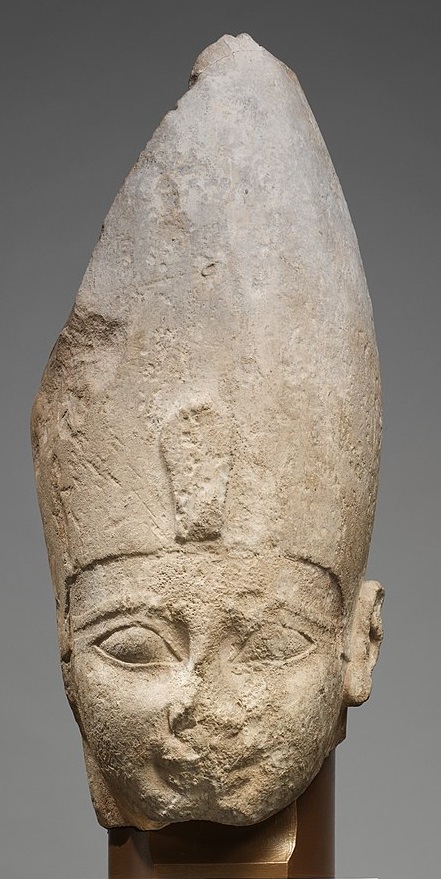
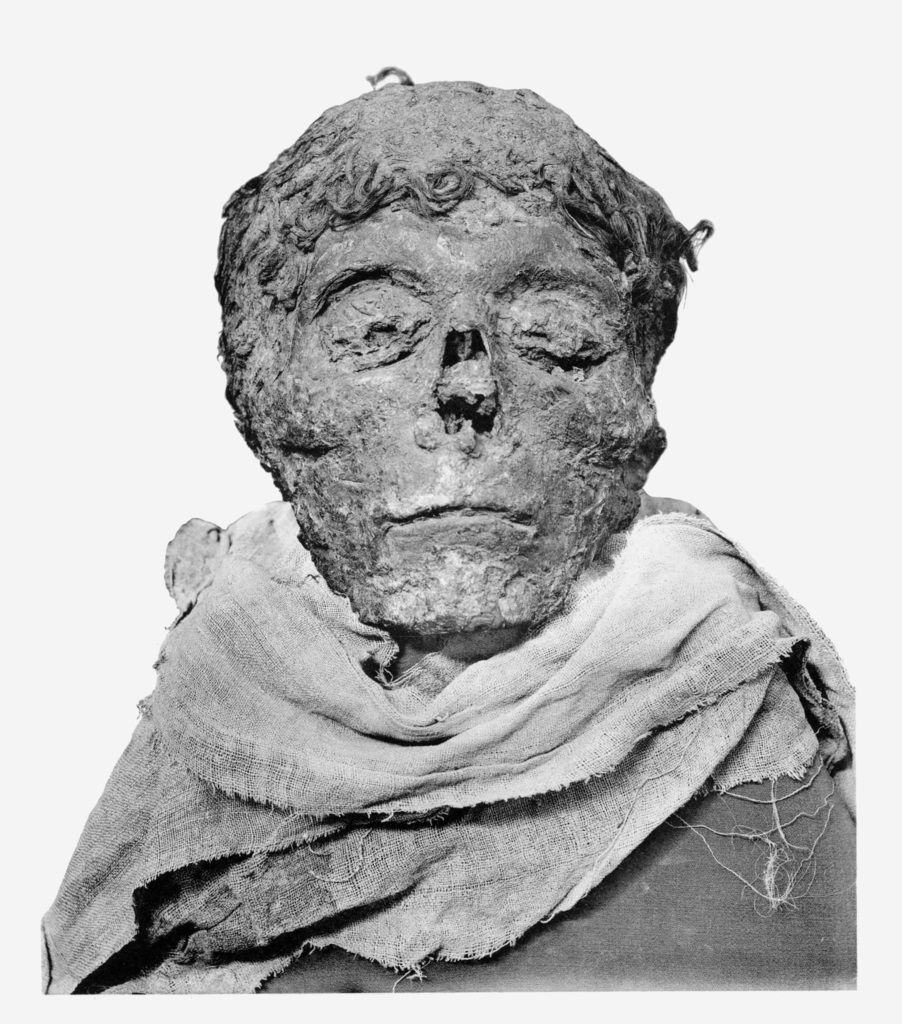
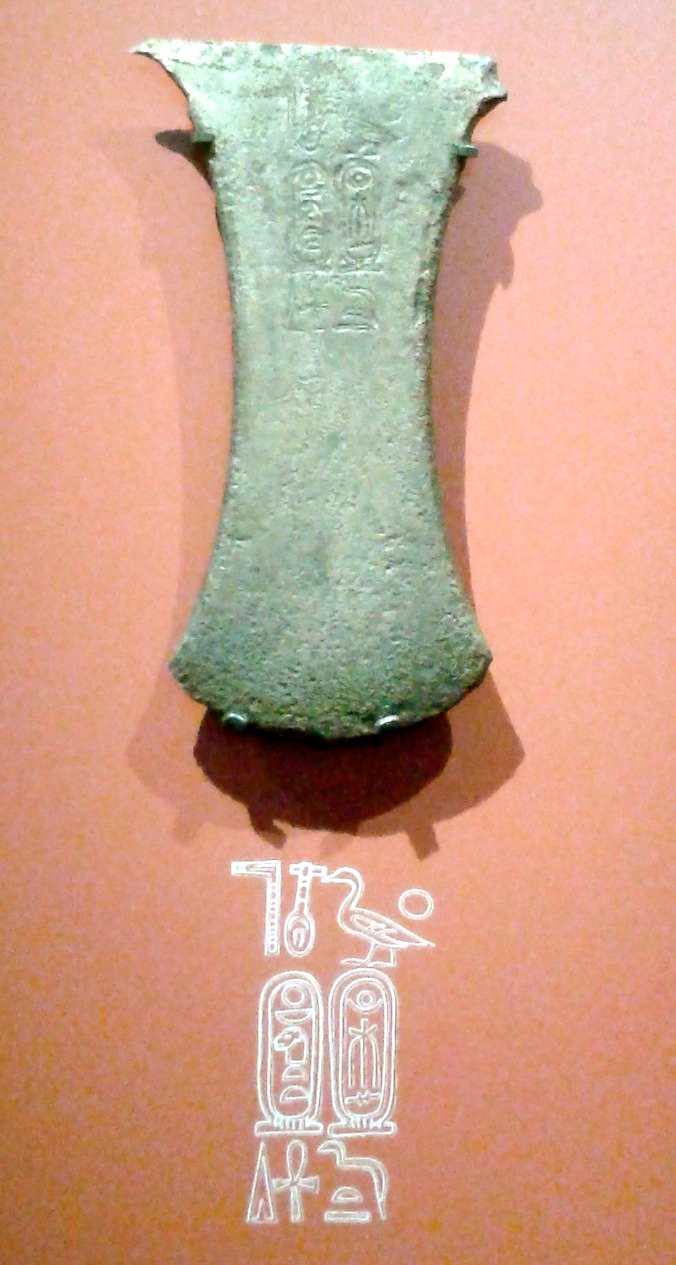
- Ahmose led the fight against the Hyksos, and founded the 18th dynasty. He captured Avaris, expelled the Hyksos from Egypt, chased them into the Sinai, and captured their city of Sharuhen (possibly Tel el-Ajjul in the Negev)
- Amenhotep I, 1,525 - 1,500 BC
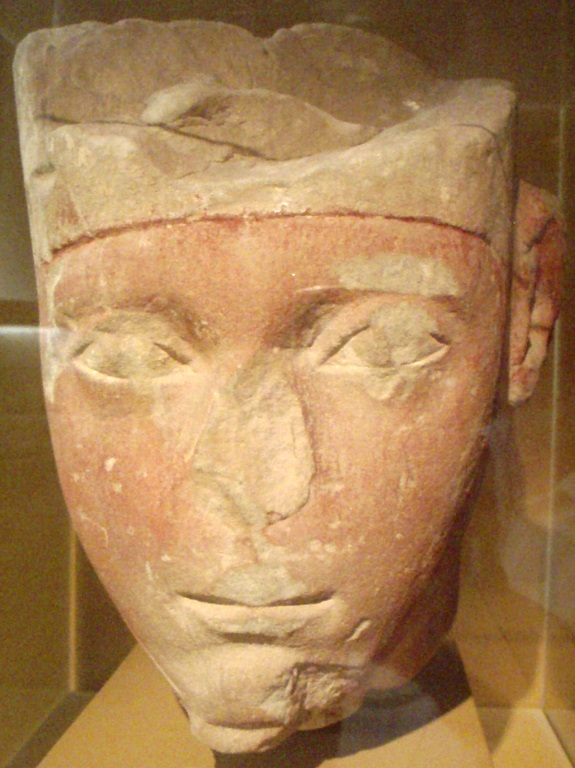
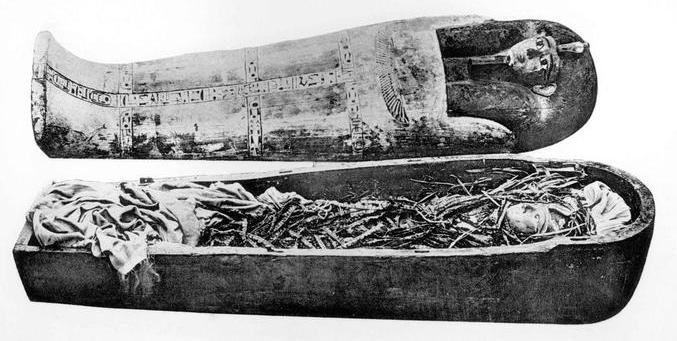
- Tuthmose I, 1,500 - 1,495 BC
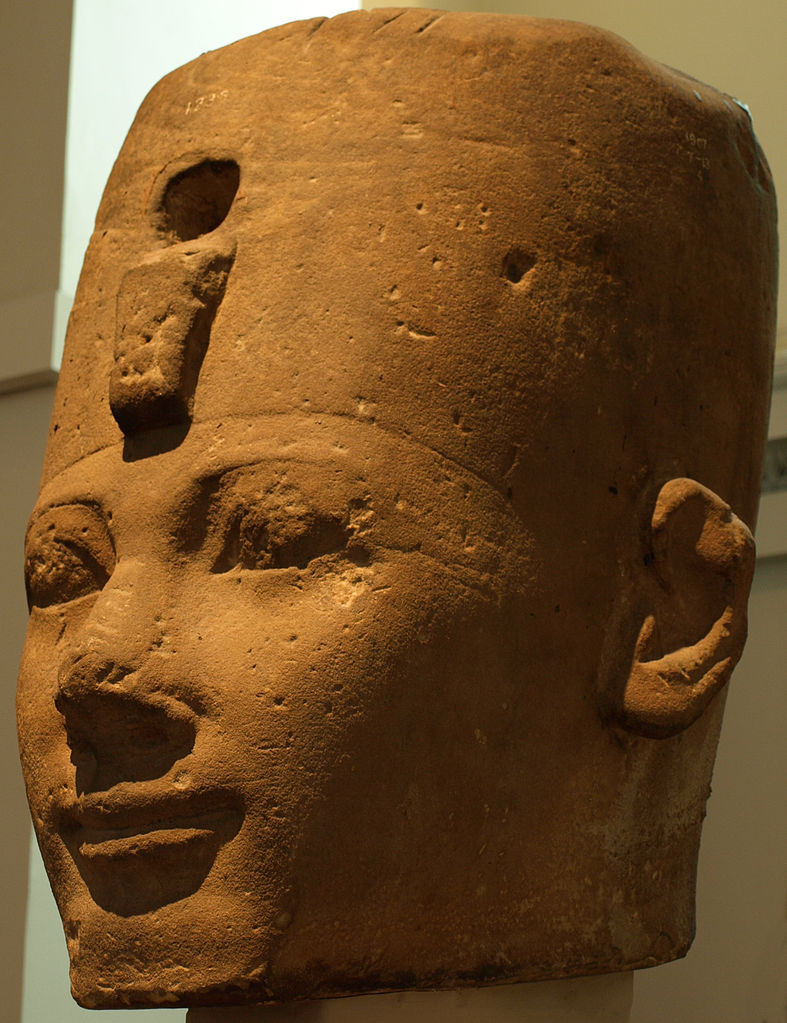
- Tuthmose I built the first tomb in the Valley of the Kings, and extended the Egyptian Empire to the Euphrates
- Tuthmose II, 1,481 - 1,479 BC

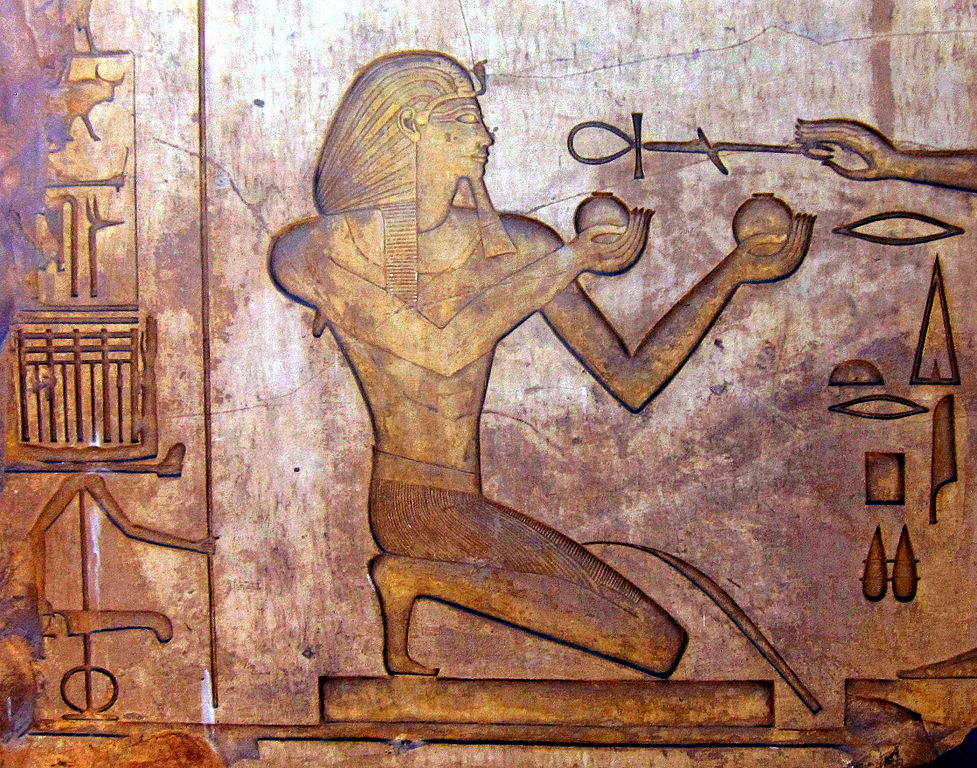
- Queen Hatshepsut, 1,473 - 1,458 BC
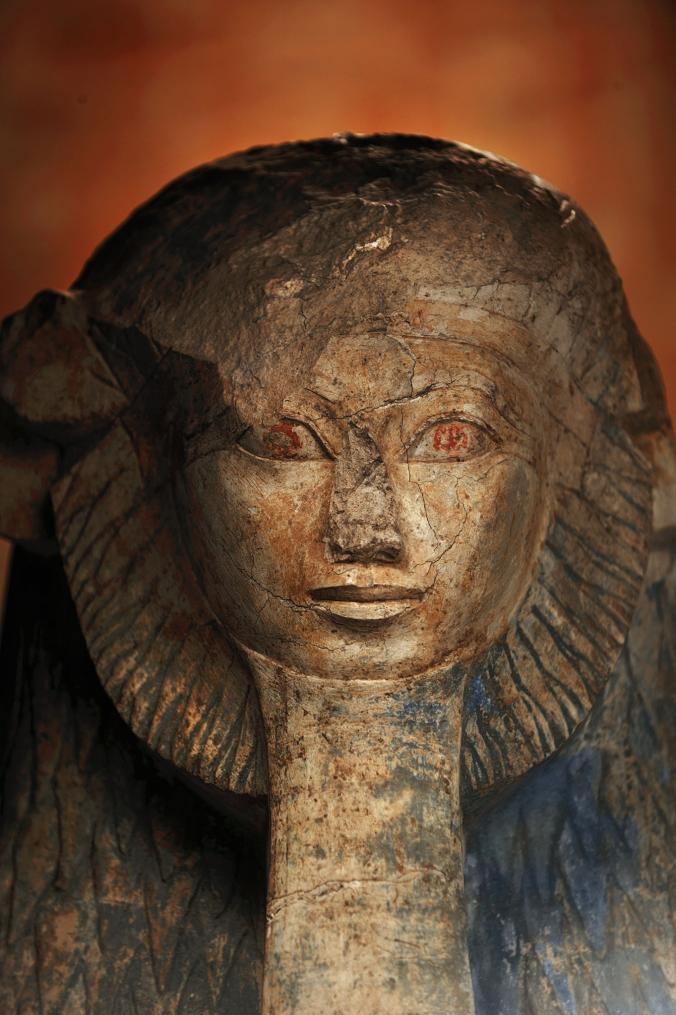
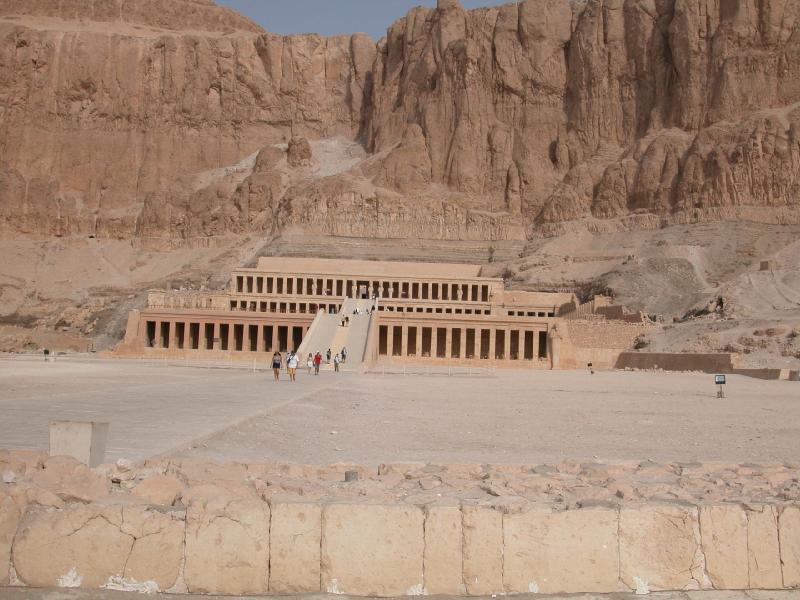
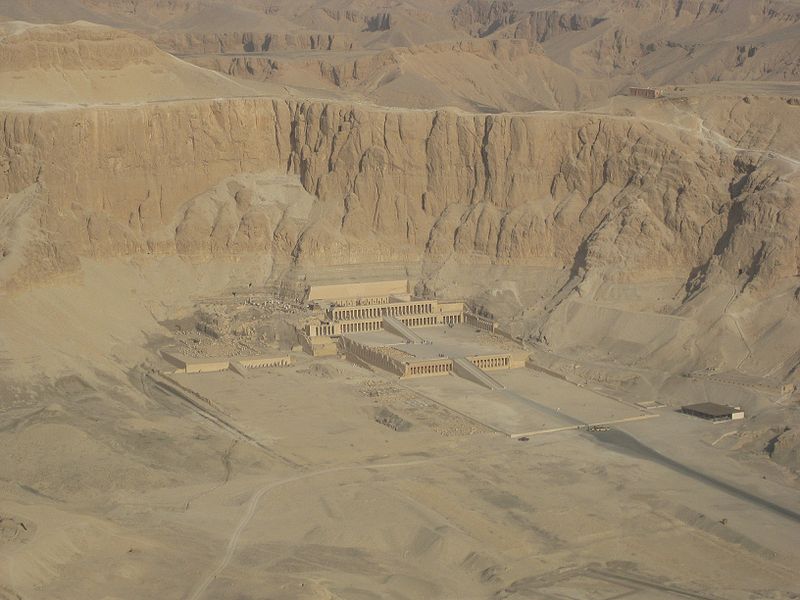
- Hatshepsut was the wife of Tuthmosis II and the mother of Tuthmosis III. She took control of the country until she was ousted by her son
- Tuthmose III, 1,479 - 1,425 BC

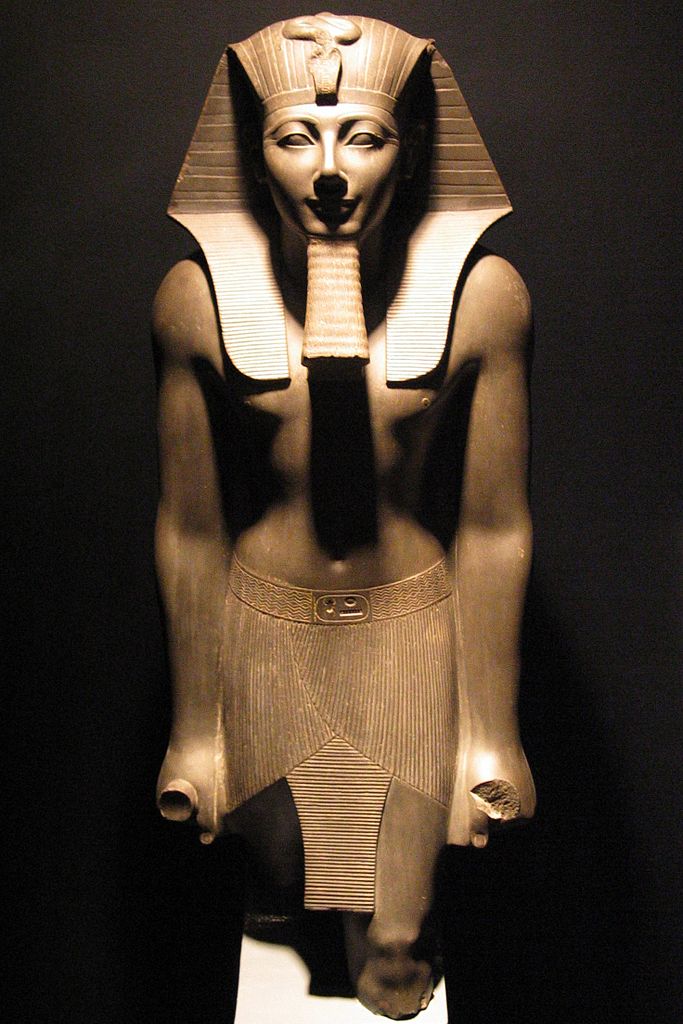
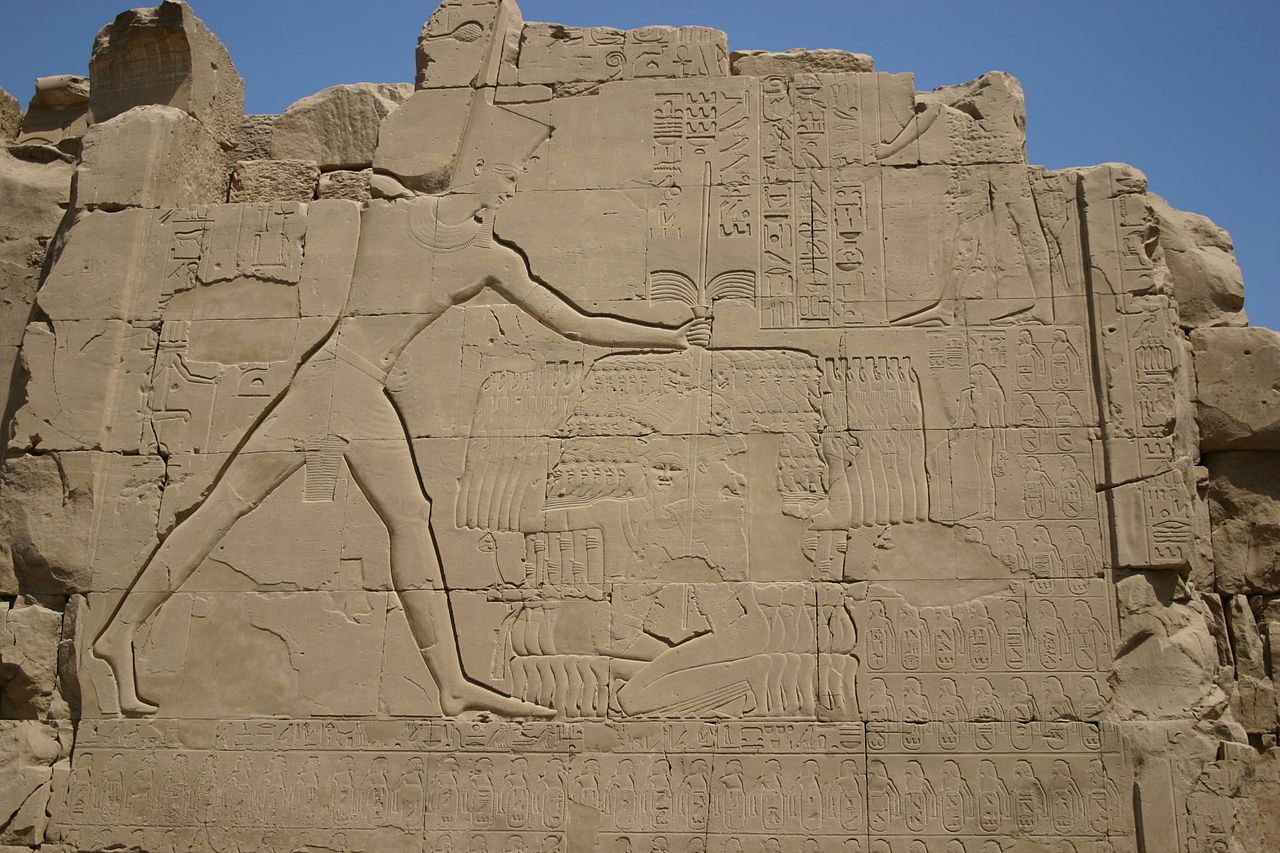
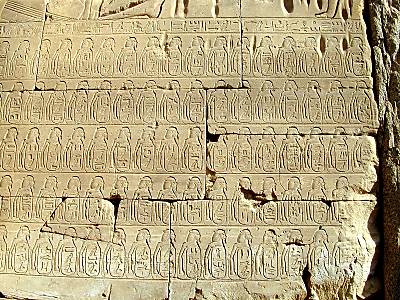
- Tuthmose III led military campaigns in Canaan and Syria. He won the battle of Megiddo and listed the names of conquered Canaanite cities on the wall of the temple at Karnak, along with a mural of him defeating his enemies in battle. Egypt dominated Canaan.
- Amenhotep II, 1,427 - 1,392 BC

- Tuthmose IV, 1,419 - 1,386 BC
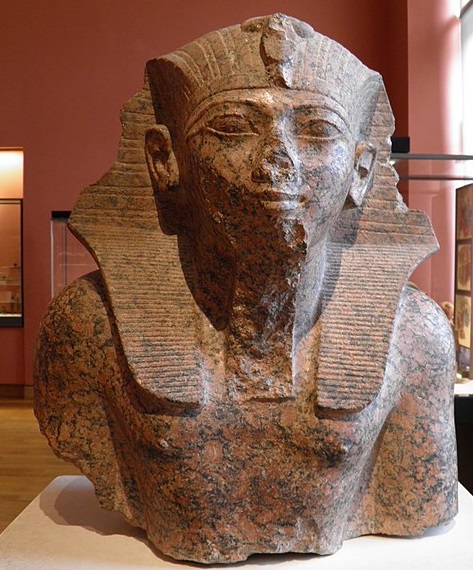
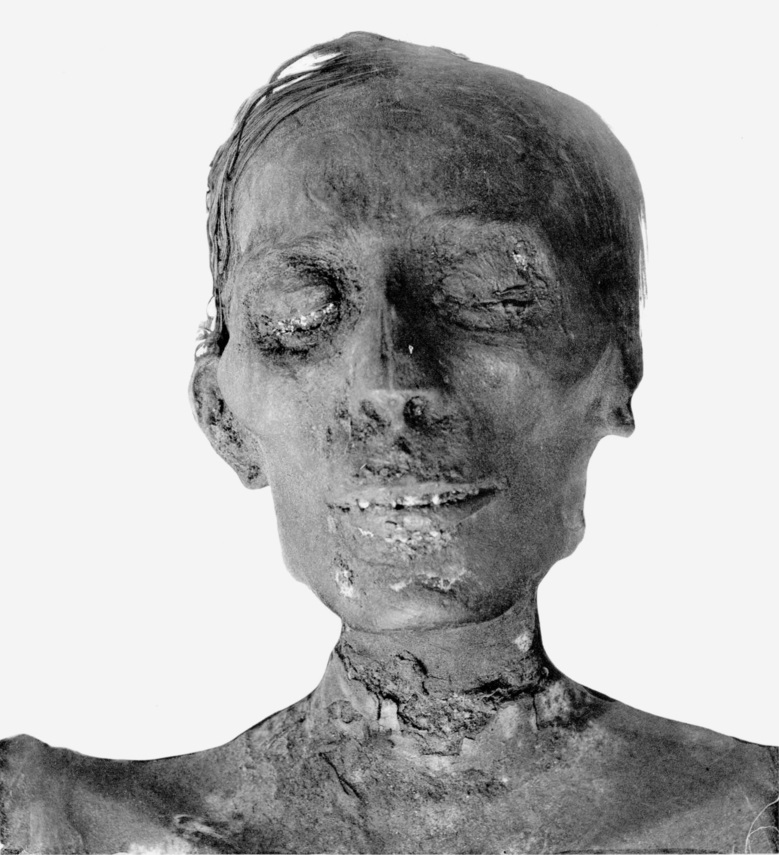
- Amenhotep III, 1,382 - 1,344 BC
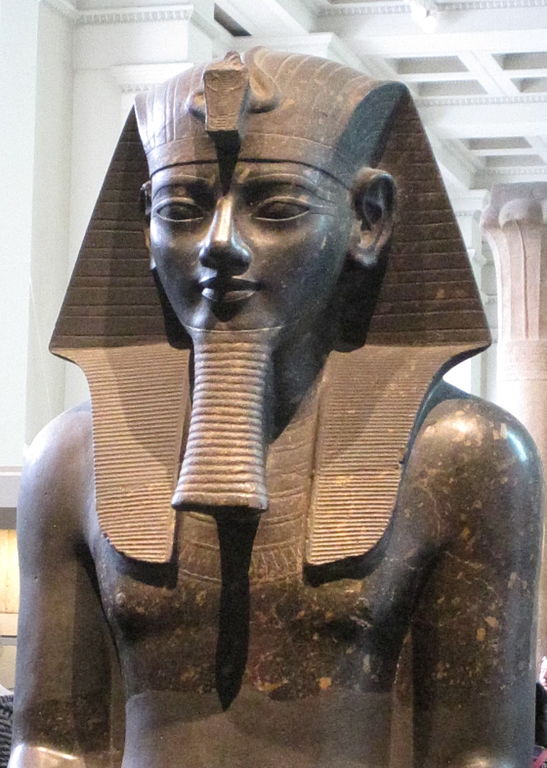
- Amenhotep III engaged in great building programs. He built the Temple at Luxor, and enalrged the Temple at Karnak
- Amenhotep IV - Akhenaten, 1,352 - 1,336 BC
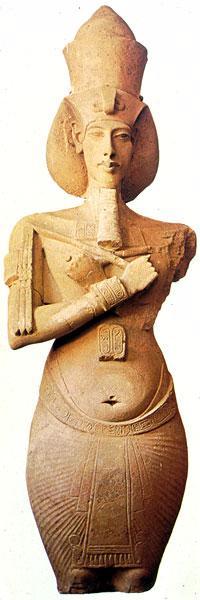

- Amenhotep IV changed his name to Akhenaten to show his belief in the god Aten, and introduced and enforced the worship of Aten as represented by the Sun-disk as the source of life.
 He moved the capital from Thebes to a completely new site which he named "Akhetaten" It is now known as Tell el Amarna.
At Tell el-Amarna archaeologists found a great library of clay tablets with diplomatic records and correspondence to and from Canaan, Babylon, Mittani, and the Hittites, including correspondence between Anchesenamun, daughter of Akhenaten, and King Suppiluliumas of the Hittites. Another artefact from Tel el-Amarna is the famous bust of Akhenaten's wife Nefertiti. Akhenaten wrote a long Hymn to Aten, which is still extant. During his reign there was tension with the priests of the other Egyptian deities, and loss of Egyptian control over other lands. Akhenaten had no sons, and was succeeded by young weak Pharaohs
He moved the capital from Thebes to a completely new site which he named "Akhetaten" It is now known as Tell el Amarna.
At Tell el-Amarna archaeologists found a great library of clay tablets with diplomatic records and correspondence to and from Canaan, Babylon, Mittani, and the Hittites, including correspondence between Anchesenamun, daughter of Akhenaten, and King Suppiluliumas of the Hittites. Another artefact from Tel el-Amarna is the famous bust of Akhenaten's wife Nefertiti. Akhenaten wrote a long Hymn to Aten, which is still extant. During his reign there was tension with the priests of the other Egyptian deities, and loss of Egyptian control over other lands. Akhenaten had no sons, and was succeeded by young weak Pharaohs - Smenkhkare, 1,336-1,334 BC
- Smenkhkare was probably murdered
- Tutankhamun, 1,334 - 1,325 BC
-


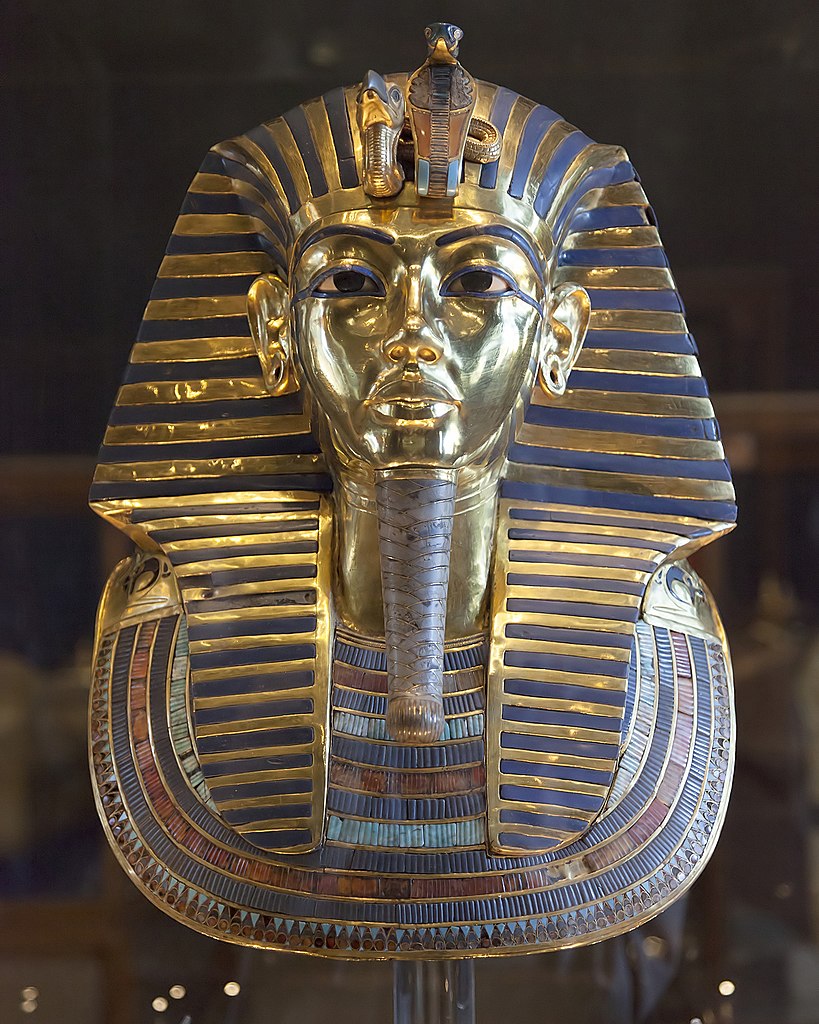 Tutankamen was originally named Tutankaten, but was forced to change his name and re-instate old system of gods and goddesses. It was a time of palace intrigues and disruption. He may have been murdered, or killed in battle.
Tutankamen was originally named Tutankaten, but was forced to change his name and re-instate old system of gods and goddesses. It was a time of palace intrigues and disruption. He may have been murdered, or killed in battle.
Among Tutankhamun's burial goods was a dagger, with a blade made from meteoric iron - the production of iron from iron ore had not yet been developed.
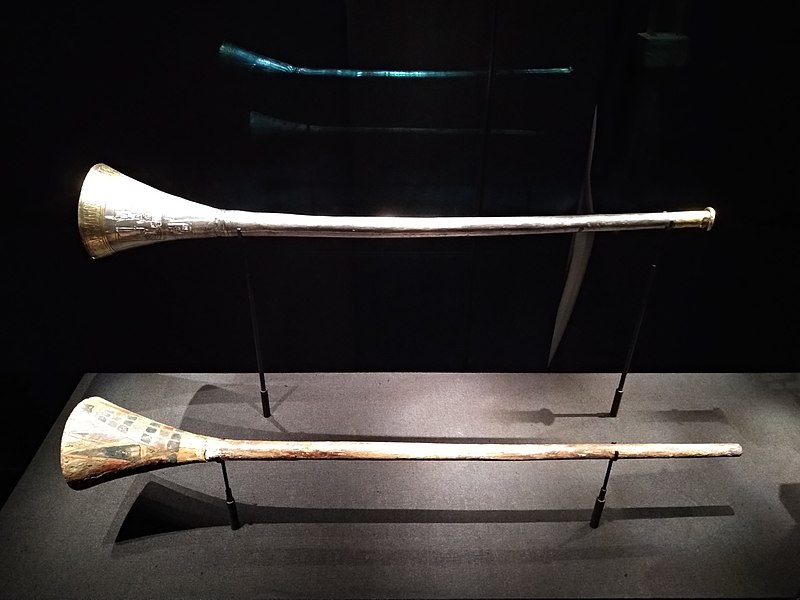


 On the death of Tutankhamun, his young widow Anchesenamun (daughter of Akhenaten) wrote to Suppiluliumas, King of the Hittites, asking for one of his sons as husband. The King delayed and sent several messages to Egypt before he sent one of his sons. The young man was murdered on his way to Egypt. She disappeared.
On the death of Tutankhamun, his young widow Anchesenamun (daughter of Akhenaten) wrote to Suppiluliumas, King of the Hittites, asking for one of his sons as husband. The King delayed and sent several messages to Egypt before he sent one of his sons. The young man was murdered on his way to Egypt. She disappeared. - Ay, 1,325 - 1,321 BC
- Ay was a chief priest or other form of bureaucrat. He tried to take control, but was probably assassinated by Horemheb
- Horemheb, 1,323 - 1,295 BC
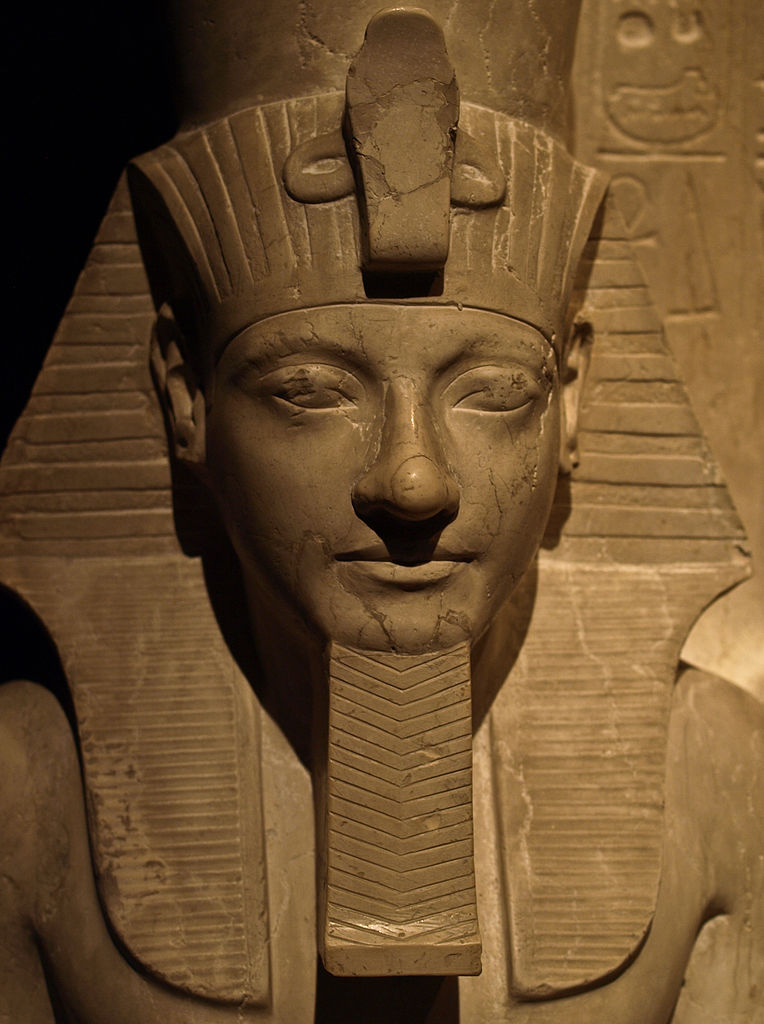
- Horemheb was a tough old general of the army who made himself Pharaoh. He had no sons, so one of his chief officers became the next Pharaoh
Pharaohs of the 19th Dynasty
- Ramesses I, 1,295 - 1,294 BC
- Ramesses I was one of Horemheb's soldiers. On the death of Horemheb Ramesses founded the 19th Dynasty
- Seti I, 1,294 - 1,279 BC
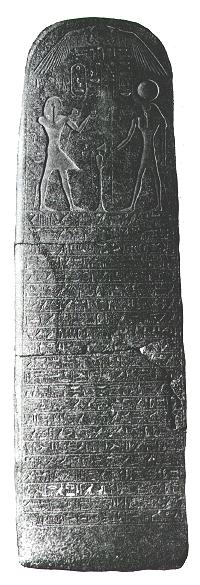
- Seti I led military campaigns into Canaan, and commemorated his success by erecting a stele at Beth Shean.
Seti I was at war with the Hittites for most of his reign - Ramesses II, 1,279 - 1,213 BC
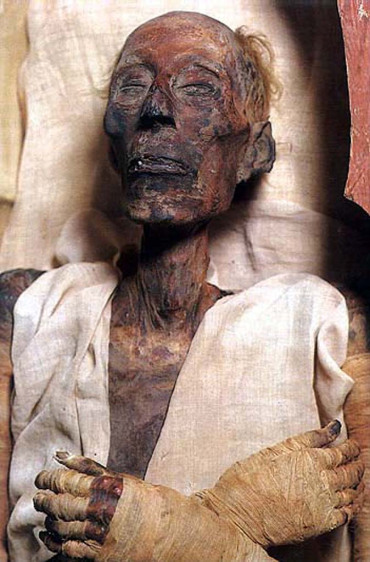
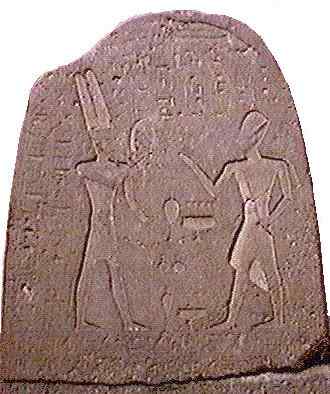

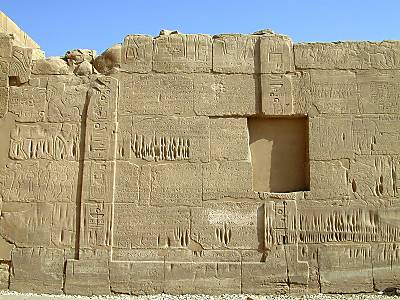
- Ramesses II fought a war against the Hittites, culminating in the Battle of Kadesh, which exhausted both countries. Although Ramesses claimed a victory, neither side won decisively. They made a peace treaty, which Ramesses commemorated with a carving on the walls of the temple of Karnak, and Ramesses married a Hittite princess. Both nations had weakened themselves by the continual fighting. Nobody won - both sides lost. Egypt eventually recovered, but the Hittites did not - their kingdom went into a decline and Hittite soldiers started hiring themselves out as mercenaries - soldiers for hire by other kings.
- Merenptah, 1,213 - 1,203 BC
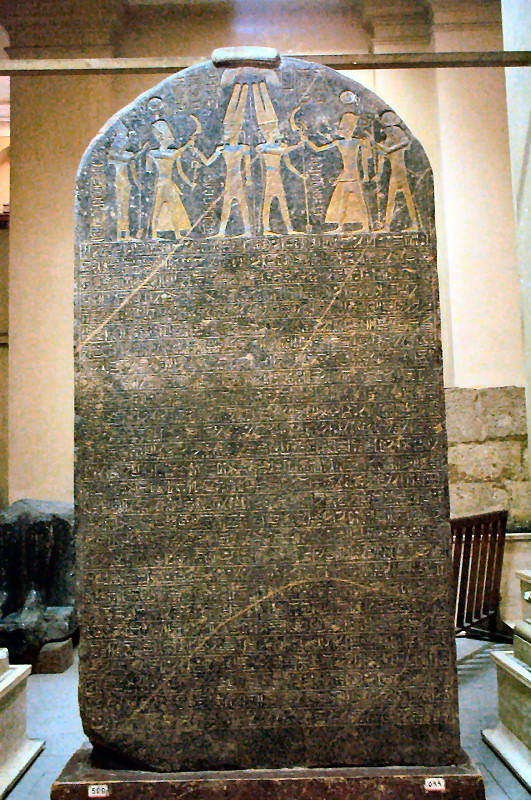
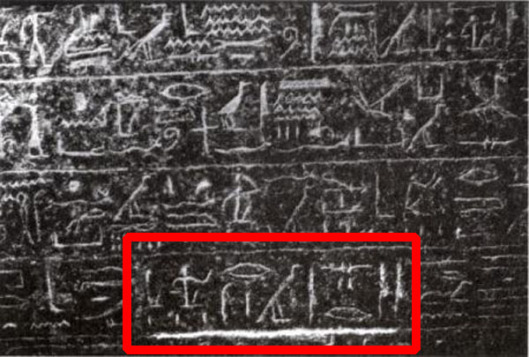
- Merenptah (Merneptah) was the son of Ramesses II. He led a military campaign in Canaan, and erected a victory stele - the "Israel Stele" - the first surviving record of the name "Israel", as a tribe, rather than a city.
Merneptah also fought off invasions of "Sea Peoples".
- Amenmesse, 1,203 - 1,200 BC
- Seti II, 1,200 - 1,194 BC
- Seti II was a son of Merenptah
- Siptah, 1,194 - 1,188 BC
- Tausert, 1,185-1,187 BC
- Tausert, or Tawosret, was the widow of Seti I. When she died the dynasty collapsed and for a short period Egypt was without a Pharaoh
 Back to this week's Assignment
Back to this week's Assignment
Copyright © 1999 Shirley J. Rollinson, all Rights Reserved